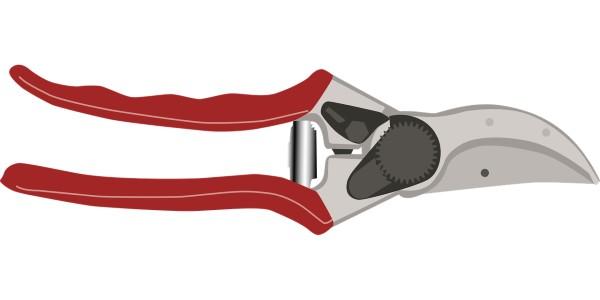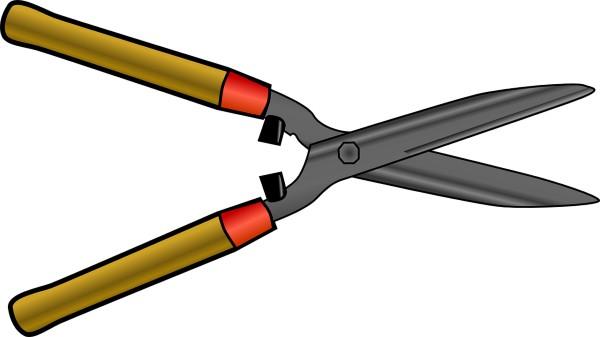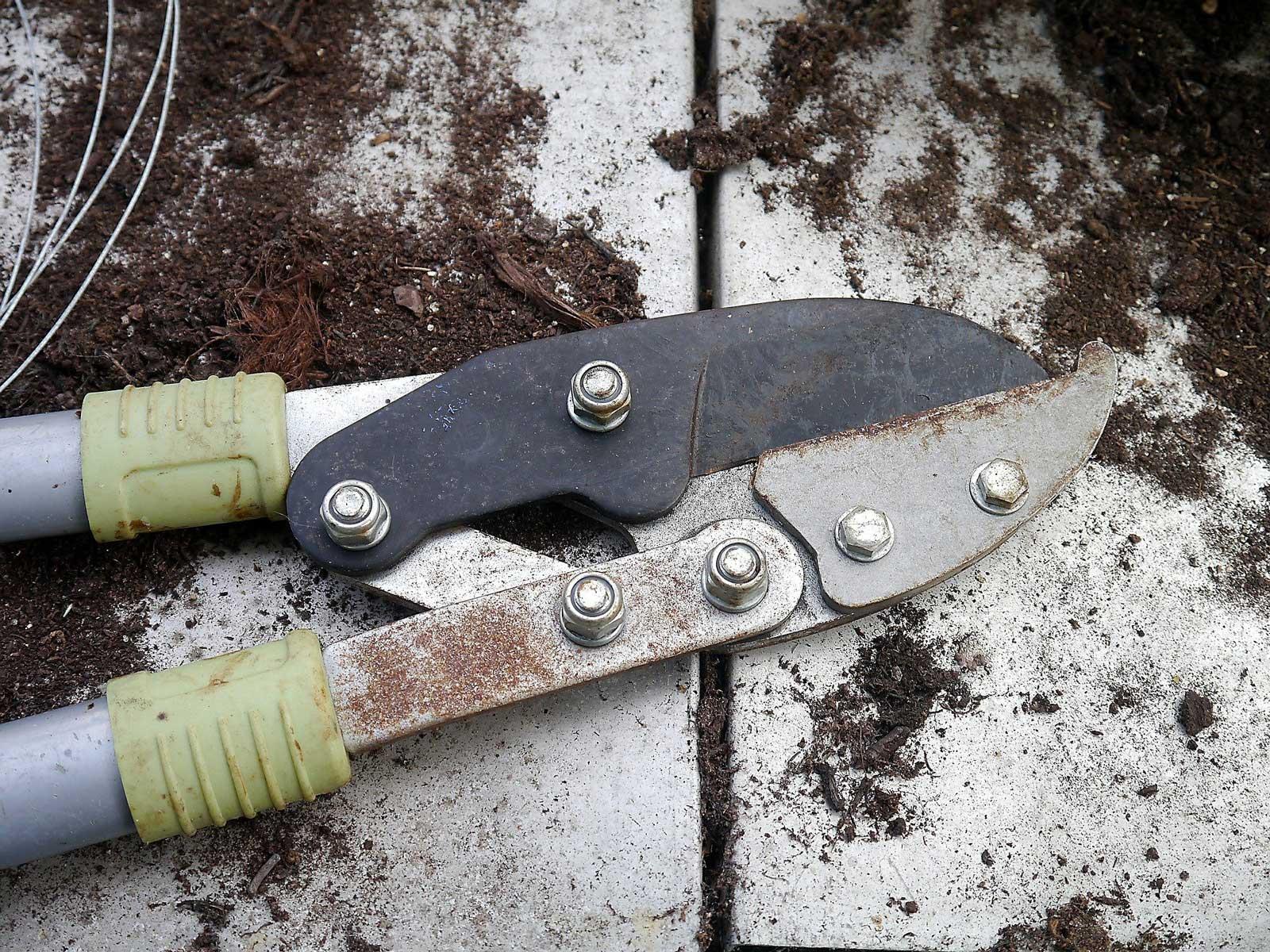Tips
- Tools must be sharp to give a good clean cut. This leaves a smooth surface on the wound with no stubs, split branches, or torn bark to harbor decay organisms.
- Keep cutting edges sharp using a file, diamond sharpener, or whetstone.
- Disinfect pruning tools if there is a danger of spreading infection from one diseased plant to another. Tools should be cleaned between pruning cuts with 70 percent alcohol, or bleach diluted one to nine with water. Be sure to rinse bleach from tools, because it is corrosive to metal.
Hand pruners

- Used for cutting branches up to one inch (2.5cm) in diameter and come in two types: anvil and by-pass (photo).
- Anvil pruners have a straight blade that closes against a small anvil or block as the handles are squeezed.
- By-pass pruners have a curved blade that slides past a broader blade.
- By-pass pruners are superior to anvil pruners because they reduce the tearing or crushing of tissues.
- Cut by moving the blade side of the pruner up and through or across the branch. Moving the blade down through the branch can cause tearing.
- Cutting branches that are too big for the pruners results in damage to the plant as well as dulling and ruining the pruners.
Pruning shears (hedge clippers)

- Pruning shears should be used to prune hedges only.
- Designed for making clean, straight cuts.
- Twisting the handgrips places excessive strain on the joint and creates excessive wear on the shears.
Lopping shears (loppers)

- Longer handles offer better leverage for cutting large branches up to three inches (seven cm) in diameter. If a stem is too wide for the blades, the stem cannot be cut cleanly with one cut creating a potentially damaging pruning cut.
- Avoid over-straining shears.
Pole pruners
- Have a hooked blade with a straight blade beneath that is moved by a rope pulled downwards.
- Fiberglass or plastic poles are lighter than wooden ones and do not conduct electricity as aluminum poles do.
- Pole pruners sometimes are combined with saws. It is important to use great care when using pole pruners to avoid being hit by falling branches.
Videos
The videos below provide more information on selecting pruning tools.
- Utah State University Extension: How to Select Pruning Tools
- Pennsylvania Horticultural Society: Pruner Care and Sharpening
Resource
(PDF) Washington State University Extension Pruning Equipment for Home Gardeners
Based on Home and Garden Information Center publication HG 84 Pruning Ornamental Plants, author Virginia Williams, CPH, Former Home and Garden Information Center Consultant, UME Bulletin 150 Pruning Ornamental Trees and Shrubs, author Dr. Francis Gouin (deceased) and revised by Ray Bosmans, Professor Emeritus, University of Maryland Extension, and the Maryland Master Gardener Handbook (revised January 2012).
Compiled by Debra Ricigliano, Home and Garden Information Center, June 2019.
